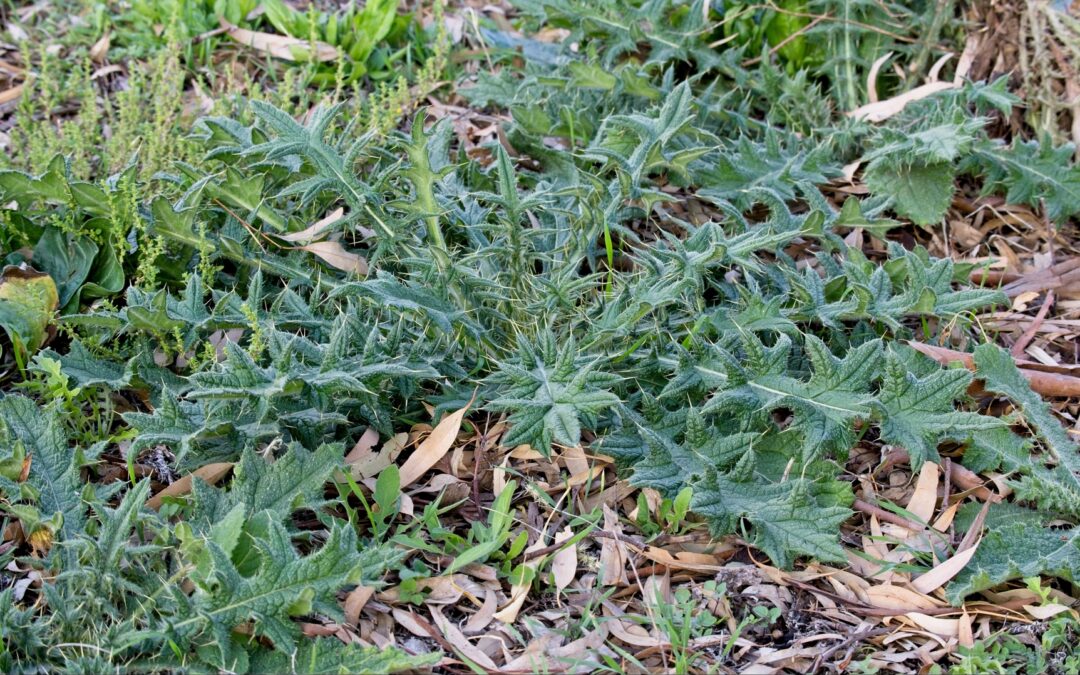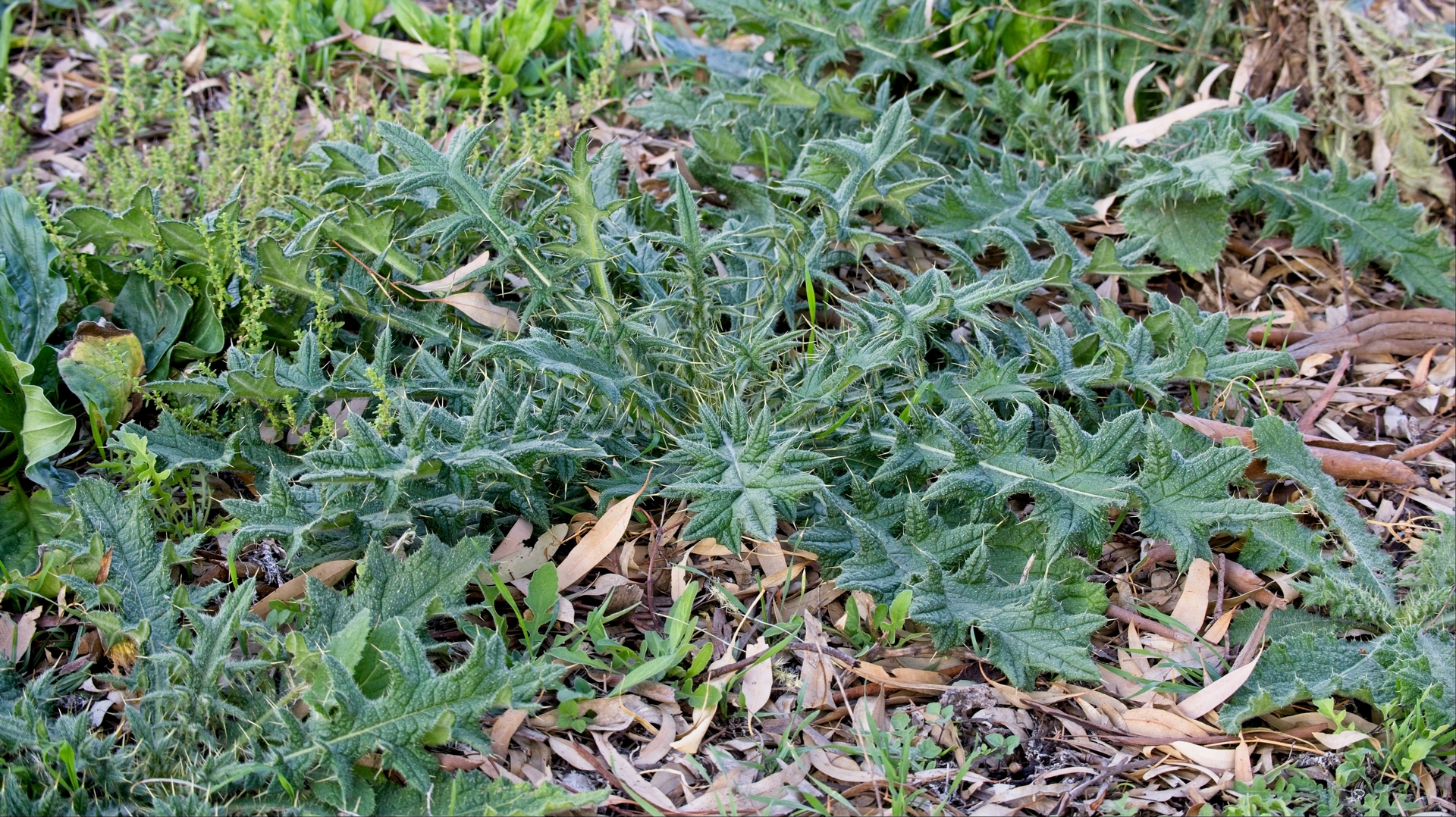
What are those prickly weeds in your backyard?
Ouch, that hurts! Ever walked across your lawn and, suddenly, felt thorns stab your bare foot? Or, ever weeded your garden and touched a weed with prickly spines? Let’s identify six plants that harm you and your pets—and then find out how we can best control these little pain dispensers. While some weeds are annoying and many are beneficial to wildlife, a small handful are noxious, invasive, and/or actually cause physical pain to you, your pets, farm animals, and equipment. Before we get into serious solutions for serious problems, remember that the first line of weed control is establishing a dense, healthy lawn by properly watering, fertilizing, and maintaining your turfgrass. Check these five questions and reflect on what could be done better. Do you:- Mow higher to develop a deep root system and lower weed infestation?
- Water your lawn and plants deeply and infrequently? Frequent light sprinkling only encourages shallow-rooted weeds and seed germination. Your lawn will wilt when water is needed.
- Recycle grass clippings (nutrients) back into the soil?
- Nourish your lawn two to four times per year so that it can crowd out weeds with regular feeding?
- Overseed in the less dense areas in the fall?
6 Weeds That Hurt People and Pets
What happens when the best practices aren’t enough? Here at The Old Farmer’s Almanac, we advocate minimal use of herbicides and recommend natural remedies as a general rule. However, there are some harmful plants that are so tough that the solution ends up being an herbicide treatment. Toward that end, we’ve partnered with the folks at Gordon’s Lawn and Garden—they’ve been around since 1924 and are a dependable brand that develops economic products for property owners. Even in our local parks, we need to spray for poisonous, invasive, noxious, and/or harmful plants that will destroy the natural ecosystem. However, we do two things to address the problem quickly, efficiently, and effectively: 1) We fully understand the weed cycle and WHEN to spray, and 2) We aim to use a selective herbicide that does not harm the plants around it and limits harm to wildlife. Now let’s identify those prickly weeds in your backyard—and share solutions on how to get rid of them.1) Burweed: A Pain in the Foot!
It is a painful walk across the lawn if you have burweed (Soliva sessilis). This low-growing weed in your turfgrass produces sharp “burs” or “stickers” that cause sharp pain when stepped on. Burweed is a winter annual broadleaf weed that germinates throughout thin, weak grass in the fall as temperatures cool. When the weather warms up in the spring, burweed forms hard, spine-tipped burs. The seed is contained within the hooked bur.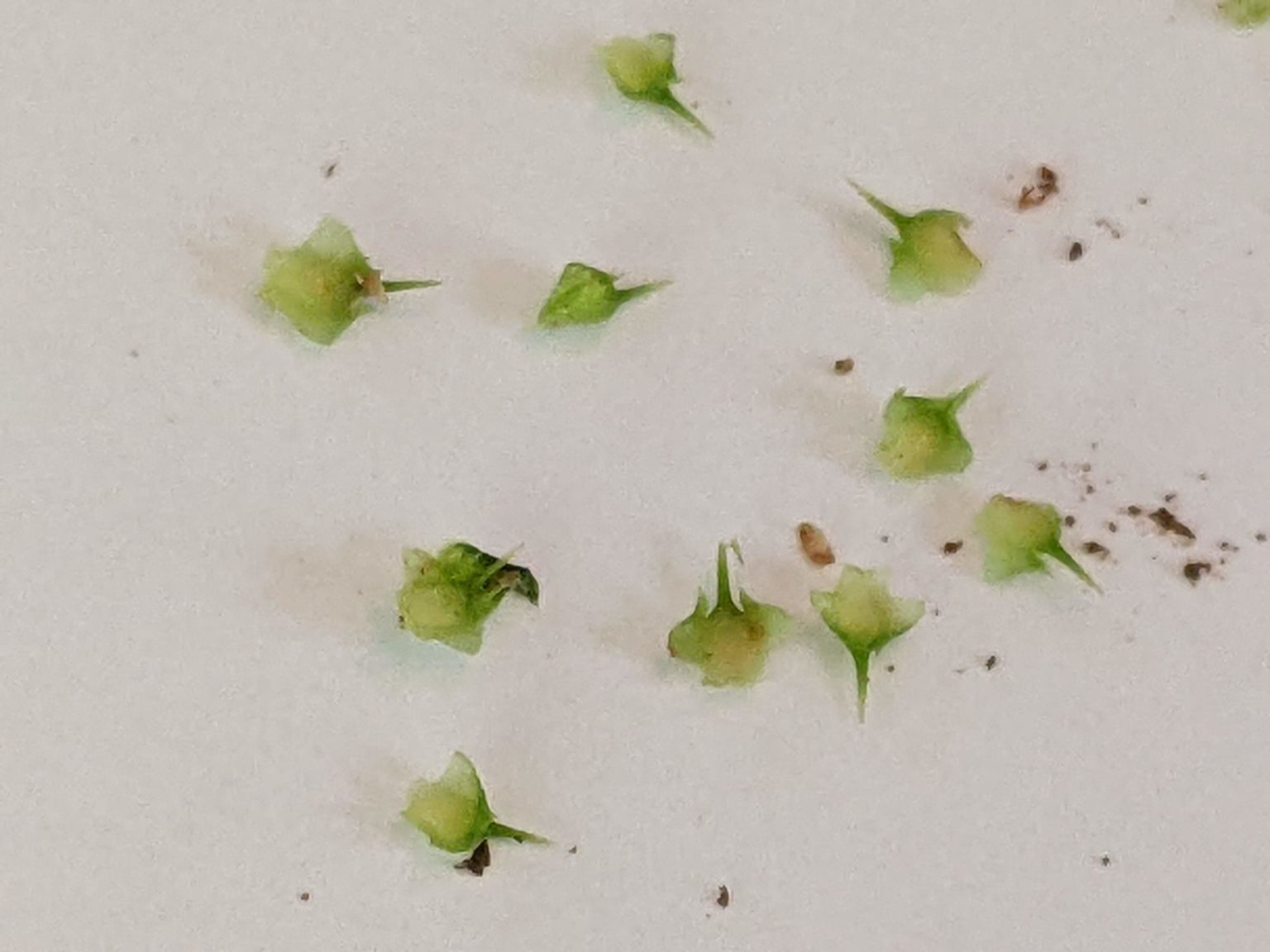
How to Get Rid of Burweed
- A pre-emergent spray in the fall (usually late September or early October) is most effective because this will prevent the seeds from germinating at all. However, many gardeners may have missed the pre-emergent stage the first time around.
- The key factor to effectively managing burweed is a post-emergent herbicide—meaning that the product must be sprayed onto the emerged plant—during the winter months before the burweed plants have developed the spine-tipped burs. Here’s a concentrated three-way herbicide blend that controls burweed.
- Once you’ve hit spring, the spines have formed and control’s not possible. The lawn burweed will die in the summer when temperatures reach 90°F.
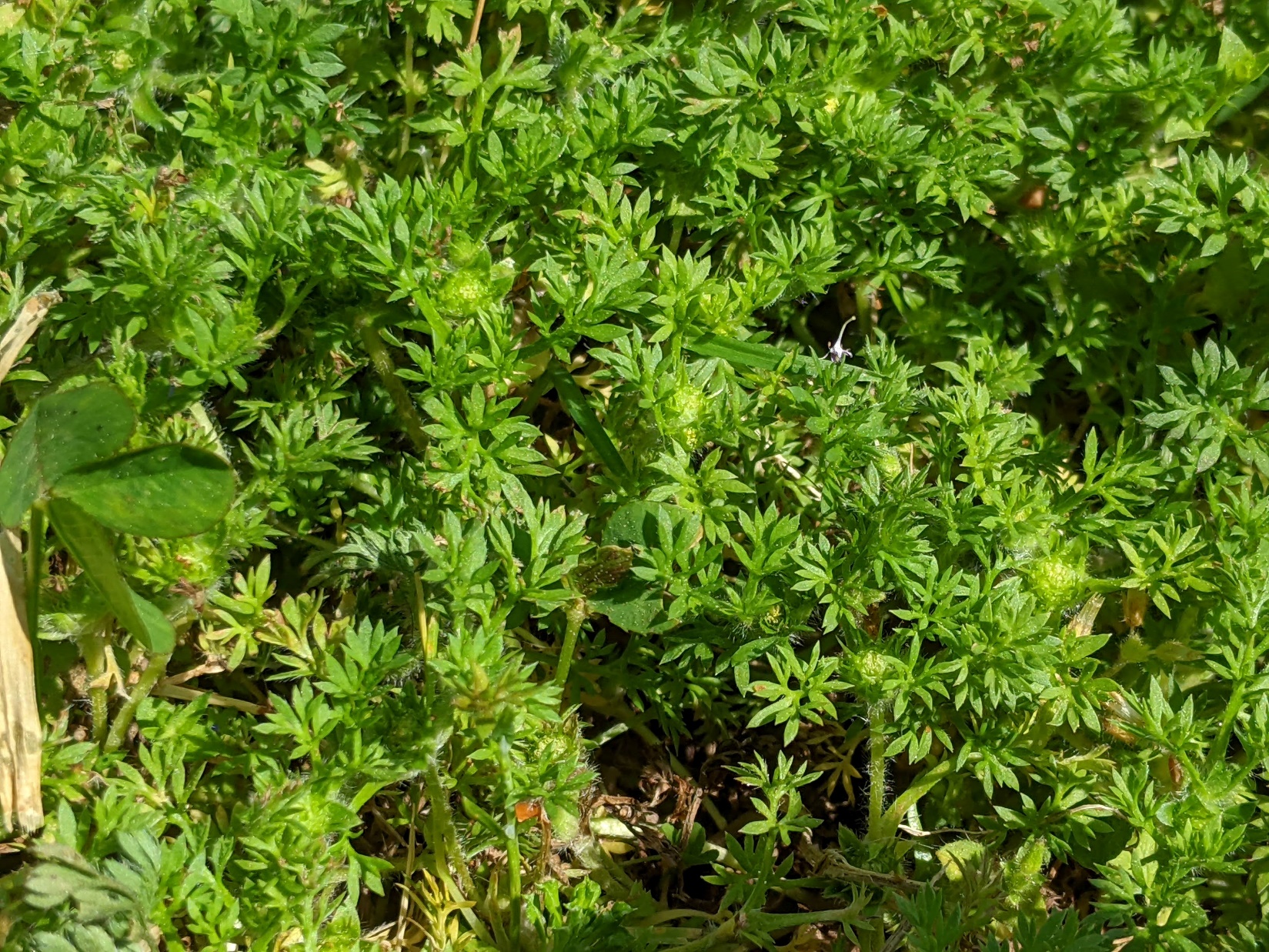
Mature burwood plant. Credit: The Old Farmer’s Almanac
2) The Sting of Sandburs!
A summer annual grassy weed with sharp, spiny burs that cause physical injury to people and pets is called sandbur (longspine sandbur: Cenchrus longispinus; field sandbur: Cenchrus incertus).
As the name implies, sandbur grows in more sandy soil; however, it has acclimated to a wide range of conditions, especially including lawns, sports fields, and parks. Sandburs are also common in grazing pastures; horses and other livestock get blisters or ulcerated lips and mouths, and the barbed seed heads can get in the gastrointestinal tract.
As with other summer annuals (such as crabgrass), early identification is important to avoid stickers. Sandburs can resemble other grassy weeds like crabgrass and foxtail, but their seed heads are spikelike racemes with burs! Learning how to identify sandburs in your area and controlling them early will prevent stickers from growing in the fall.
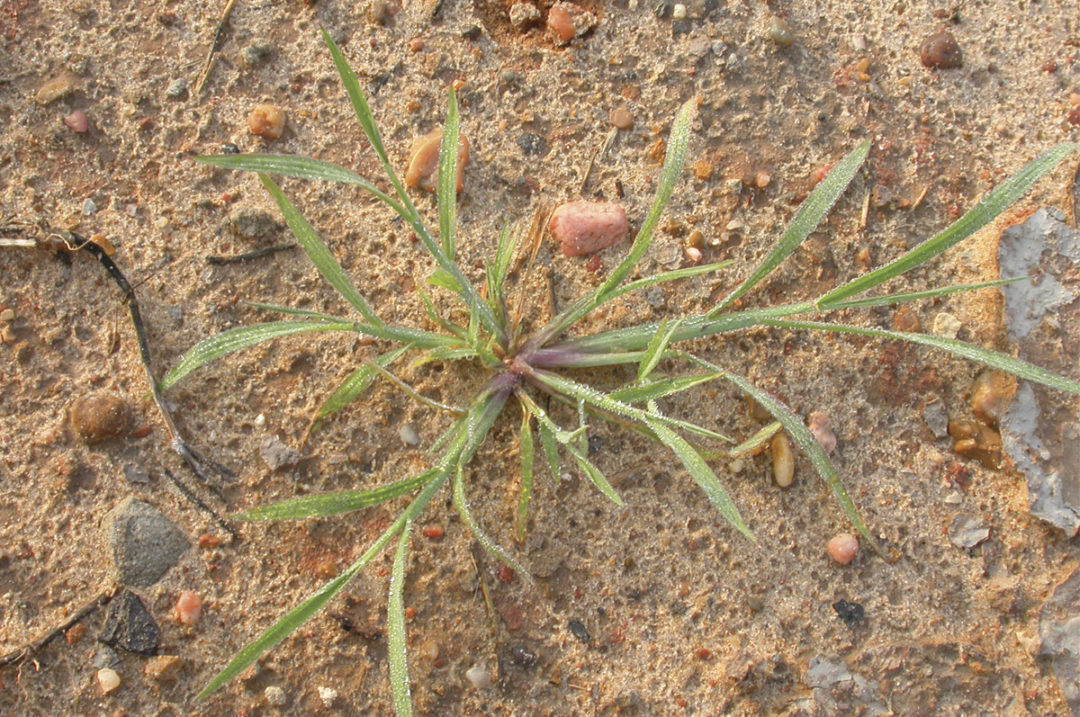
Sandburs generally start germinating in late spring and will continue to grow until flowering in late fall. The flowers are a raceme of burs, with each bur having sharp spines that are painful when touched. The seed is inside the bur, which will overwinter in the soil.
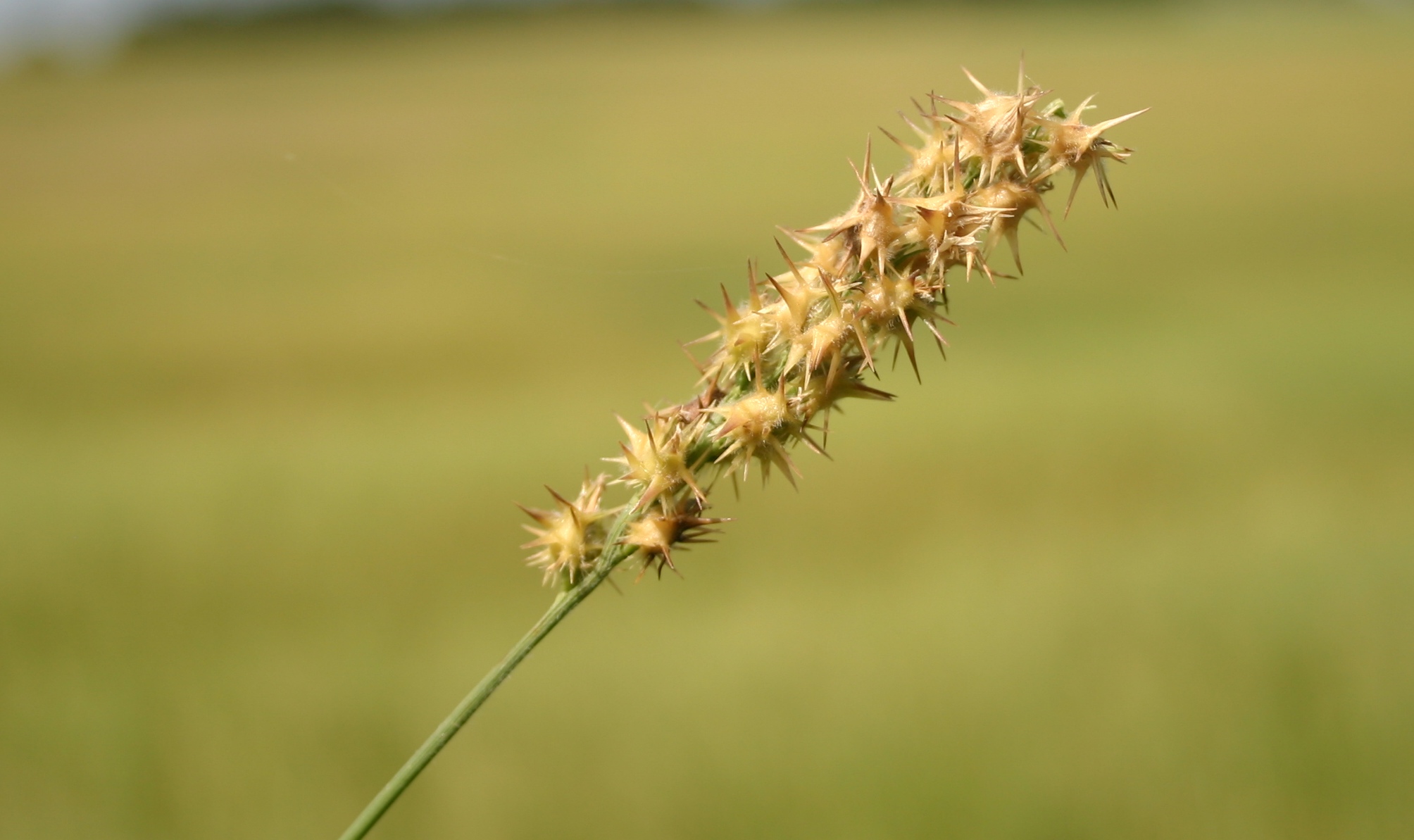
How to Get Rid of Sandbur
- Pre-emergent herbicides are most effective. Apply in the spring 2 to 4 weeks before weeds sprout from seeds when the soil temperature reaches 52°F. Water in afterward.
- If you didn’t get a pre-emergent herbicide down, use a post-emergent spray to control germinating burs after temperatures reach about 75°F and then water in thoroughly. In infested areas, spray again after 6 weeks.
- Once again: A healthy, dense lawn is the best protection, as weeds such as sandbur look for empty spots in weak lawns.
3) Canadian Thistle: A Prickly Problem!
Almost everyone who gardens has confronted thistle. Yes, these are the weeds that come with prickly, painful spines around their margins.
There are many types of thistles: perennial thistles, such as Canadian thistle; biennials, such as the bull thistle; and annual thistles that germinate in both spring and fall.
Canada thistle (Cirsium arvense) is an aggressive, perennial, broadleaf plant from Eurasia (despite its name). It’s on the noxious weed list in many states, as it will completely dominate and leave land useless, outcompeting all vegetation for water, light, and nutrients.
The plant emerges from its roots in mid-t o late spring, forming small rosettes with jagged leaves covered in thick hairs. It grows up to 3 feet 4 inches tall and has very prickly leaves. Flowers bloom in summer and set seed in fall.
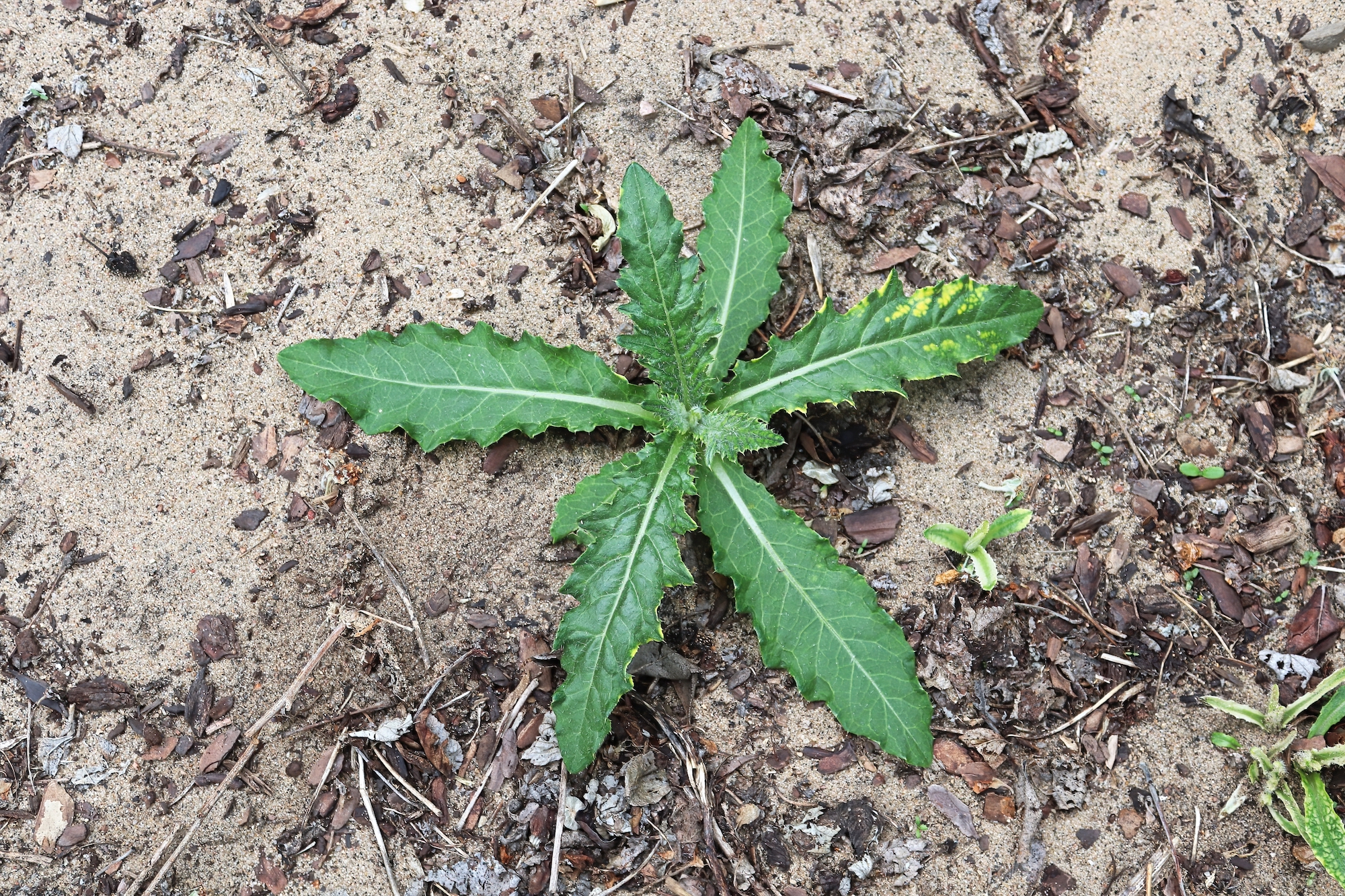
How to Get Rid of Canadian Thistle
Canadian thistle is a special challenge because it not only reproduces from seeds but also has an extensive root system that spreads underground up to 20 feet a season—so plants keep popping up. Ultimately, the goal is to keep Canadian thistle from flowering and producing seeds in the summer and fall. Controlling small infestations is more effective and less expensive.
- Pre-emergent sprays in the spring can control the seeds as they germinate and prevent them from growing and emerging.
- If Canadian thistle becomes rooted, the best way to control it is to stress the plants before they regenerate food reserves in their roots or produce seed. Burning, tilling, and mowing early in May or June helps to weaken existing thistles.
- A post-emergent herbicide is effective with a fall application. Plants are transporting food to the root system for winter, and the herbicide moves with the food and facilitates long-term control. Use a selective post-emergent spray that can kill Canadian thistle without harming lawn grass. Repeated applications are necessary.
4) Bull Thistle: A Bully of A Weed
Bull thistle (Cirsium vulgare) is a robust and spiny plant found in every state in the U.S. and listed as a noxious weed in some states. It spreads entirely by seed and can produce 100 to 300 seeds per flower head, with one to more than 400 flower heads per plant!
As a non-native, it will outcompete all native plants once established. It’s not palatable to wildlife or livestock. Bull thistle is a biennial, meaning that it needs two seasons to reproduce. The plant forms a “rosette” up to 3 feet in diameter during its first season. This is a taproot with a cluster of leaves that are long, deeply lobed, and bearing coarse, prickly hairs on the top and woolly hairs beneath—as well as long, sharp spines along the edge! In the second year, the rosette sends up a flowering stalk with pink-magenta flowers that bear spine-tipped bracts below the petals.
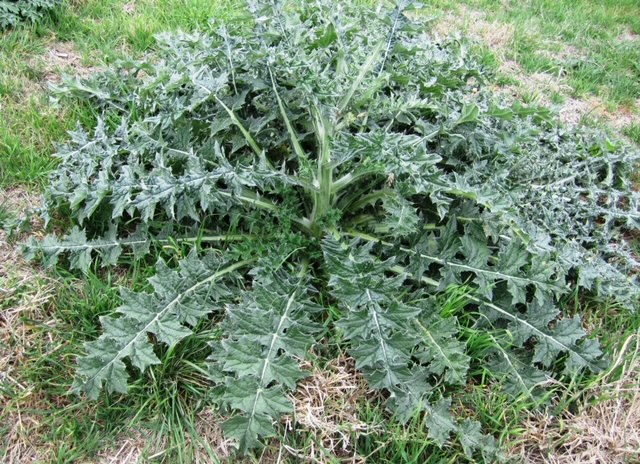
How to Get Rid of Bull Thistle
- Pre-emergent herbicides can control the seeds as they germinate and prevent them from growing and emerging.
- Once Bull thistle has emerged, treatment in the rosette growth stage in early spring provides better control than do later applications. The younger the rosette, the better the results! Once the plant is in stalk form or flowering, it’s more difficult to kill. Use this fast-acting weed killer that is safe for people and pets once the spray has dried.
5) Black Locust: Thorny and Toxic
A tree with sharp thorns and toxic pods that hang from its branches? This is the unique black locust tree (Robinia pseudoacacia), which also has a remarkable ability to grow new branches by sprouting new roots and shoots. The tree grows with a single leader, and thorns can be found on the trunk or limbs. This midsize deciduous tree contains several toxic components in its leaves, stems, bark, and seeds. It is poisonous to animals when ingested and especially dangerous to horses, which will eat the young shoots or chew on the bark. Would it surprise you to learn that this thorny, toxic tree is the only woody native that we now consider invasive? Originating in the Appalachian and Ozark Mountains, black locusts have invaded forest ecosystems where its trees outcompete native plants and have a wide range of negative impacts on native ecosystems and species.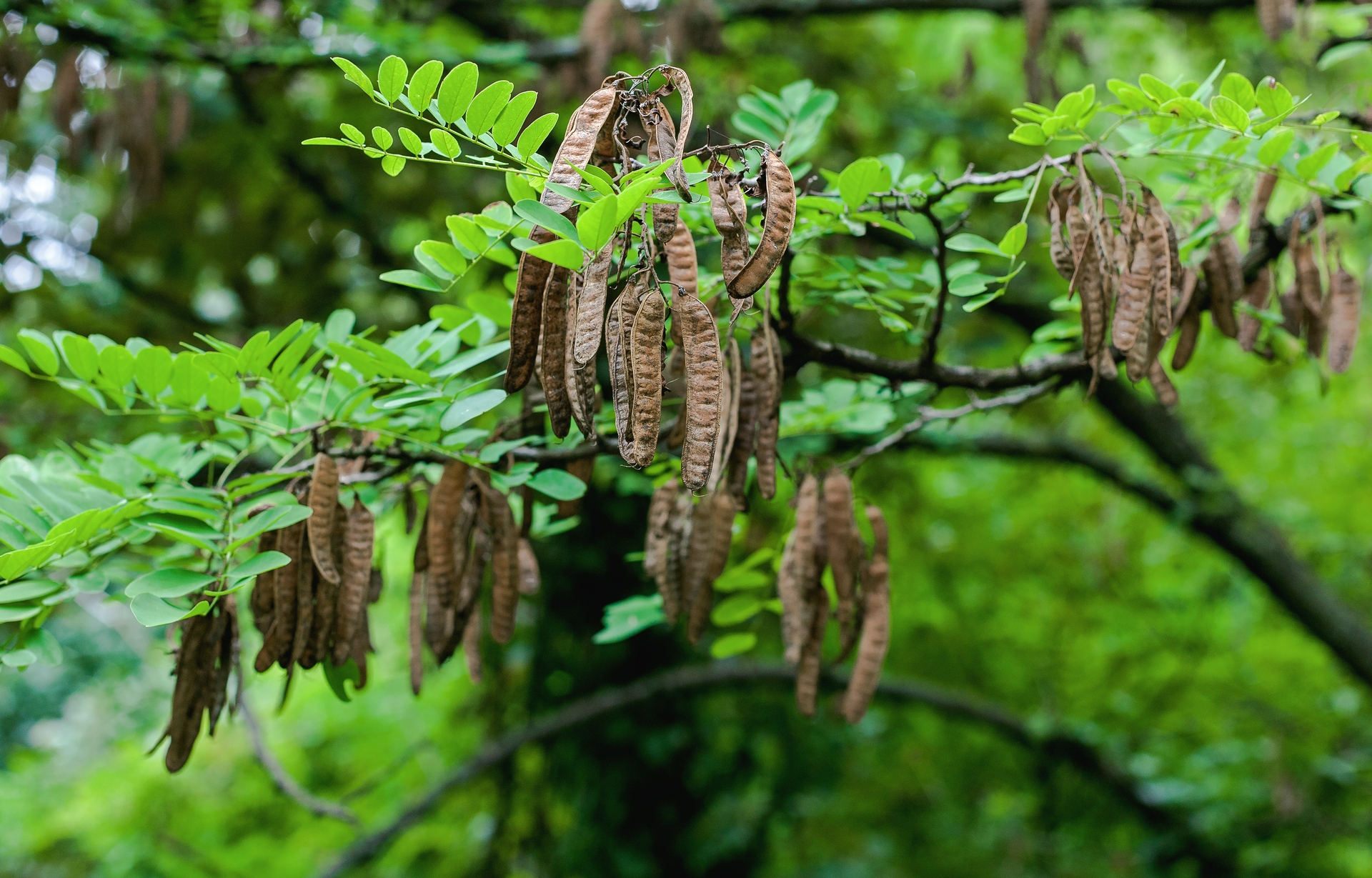
How to Control Black Locust
Because black locust is extremely difficult to eradicate, effective control requires an herbicide for hard-to-kill brush that is applied in different ways:- Small trees (which have thinner bark) can be controlled using a basal bark application of a triclopyr-based herbicide.
- Large trees should be controlled using a cut stump application with a triclopyr-based herbicide to prevent suckering. Cut the tree as close to the ground as possible and apply the herbicide within 30 minutes of cutting.
6) Mesquite
The mesquite tree (Prosopis ) is one of the toughest brush species in America and thrives across dry areas and pastures. Small and scraggly, mesquite has one or multiple twisting trunks that grow branches with very sharp and spiky thorns and bear toxic bean pods about 8 inches long. While once contained to its native desert in the Southwest, unfortunately, mesquite has become highly invasive, due to its extremely long roots that can travel to seek water from very deep underground. Early-day ranchers called mesquite “the devil tree” because it absorbs most or all of the water in its surroundings, causing other plants and trees to wither away and die. The bean pods are toxic to cattle, horses, and other grazing animals. But even beyond pastures, this plant negatively damages plants, wildlife, cropland, and entire ecosystems. Fortunately, mesquite that’s outside its native zone can be controlled with methods that are easy, inexpensive, and environmentally responsible—as long as you monitor and stay on top of this weed!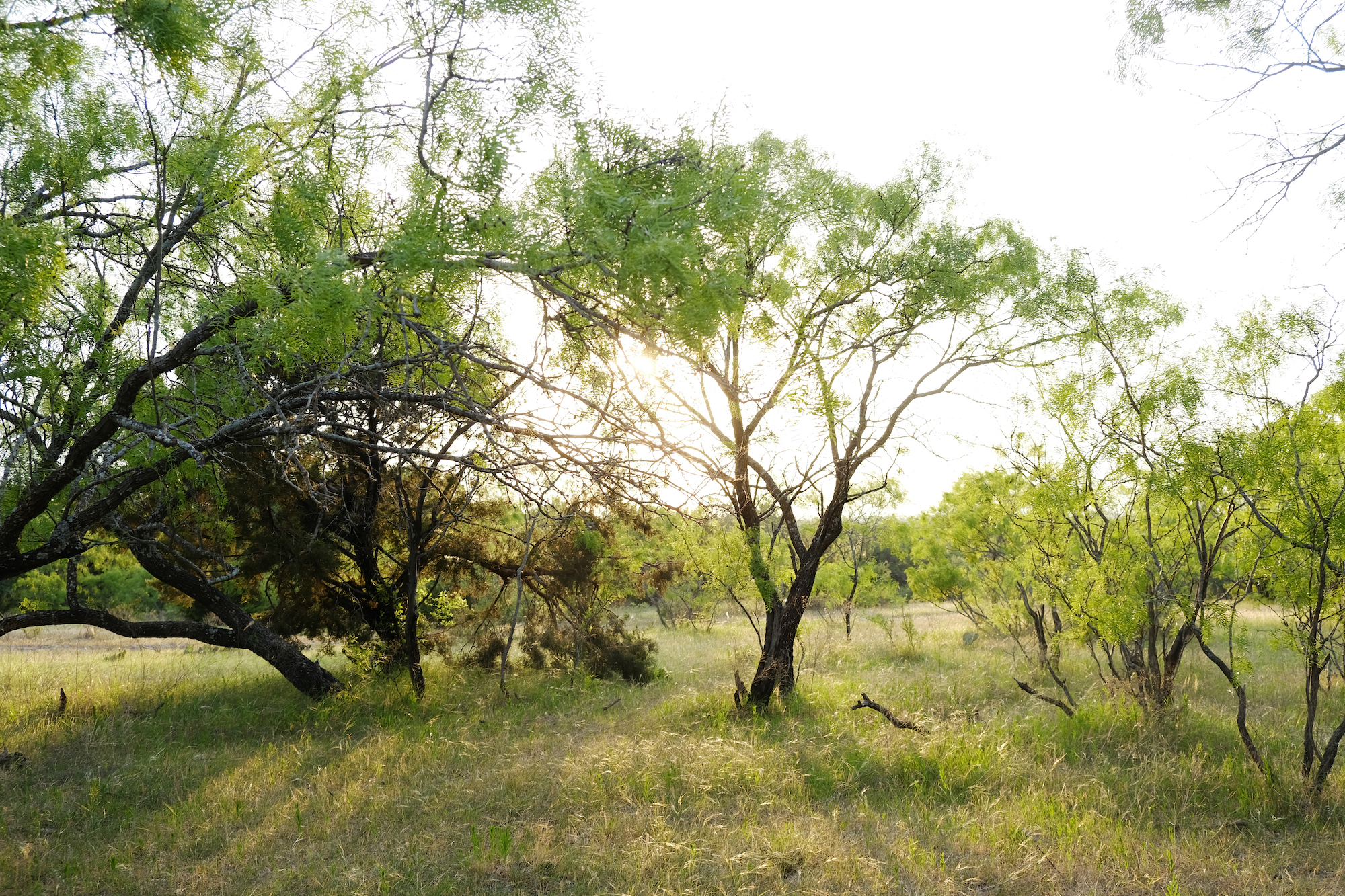
How to Get Rid of Mesquite
Because black locust is extremely difficult to eradicate, effective control requires an herbicide for hard-to-kill brush that is applied in different ways:
- For young seedlings or older trees with three or fewer smooth bark stems coming out of the ground, the stem spray method may be a good option. Spray anytime during the year, although the best results occur during the growing season. Here’s an example of a brush killer, especially for mesquite.
- For bushy mesquite less than 6 feet tall with many stems at ground level, the leaf spray method may be the best option. Multi-stemmed mesquite plants are much more difficult to control. Start spraying the leaves in spring, when mesquite leaves change color from light pea-green to a uniform dark green.
Let us know if you’ve discovered any of these prickly, thorny plants in your yard or garden! Did this article help you to identify them and discover solutions? We welcome your tips if you’ve experienced these plants that hurt!

